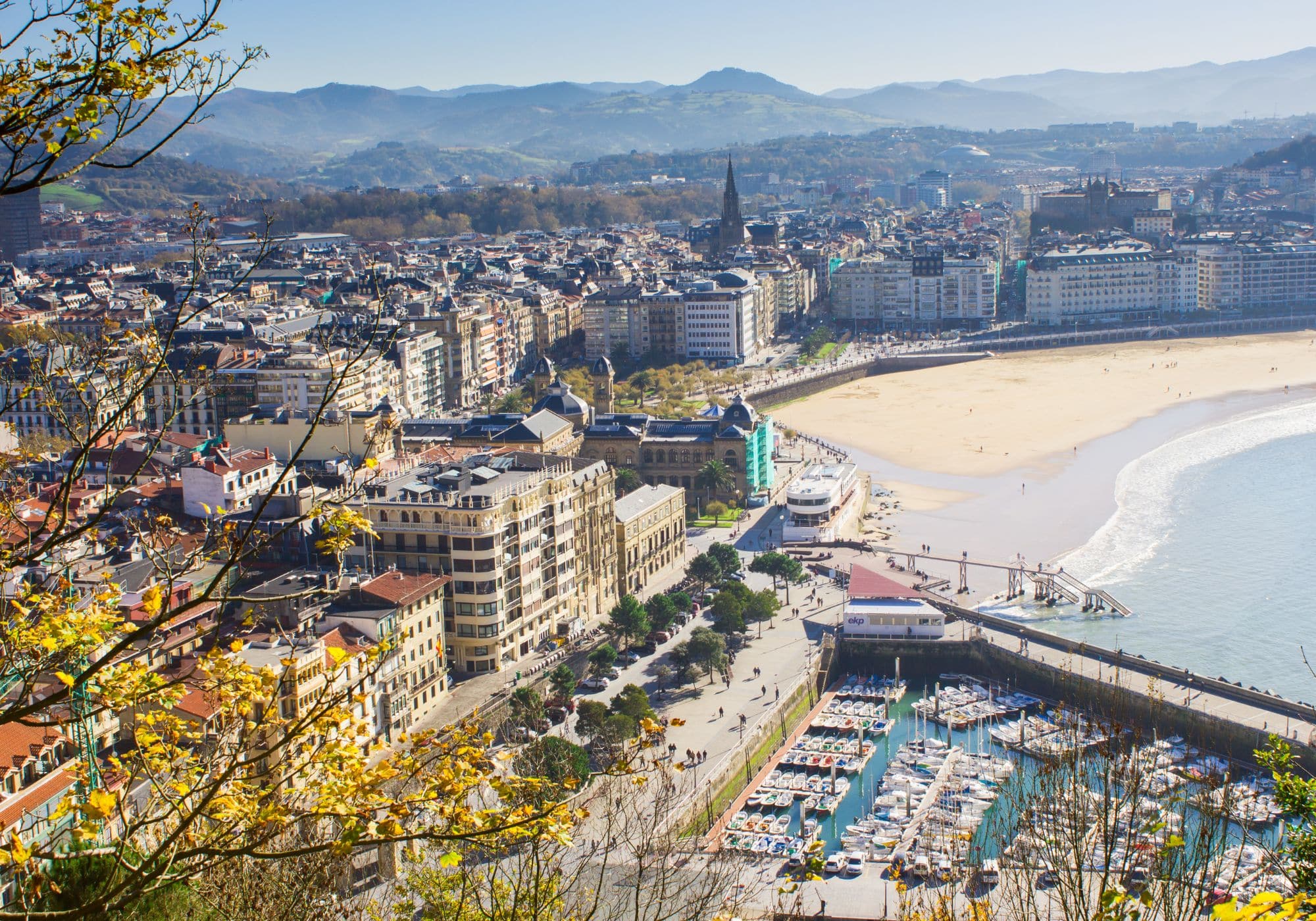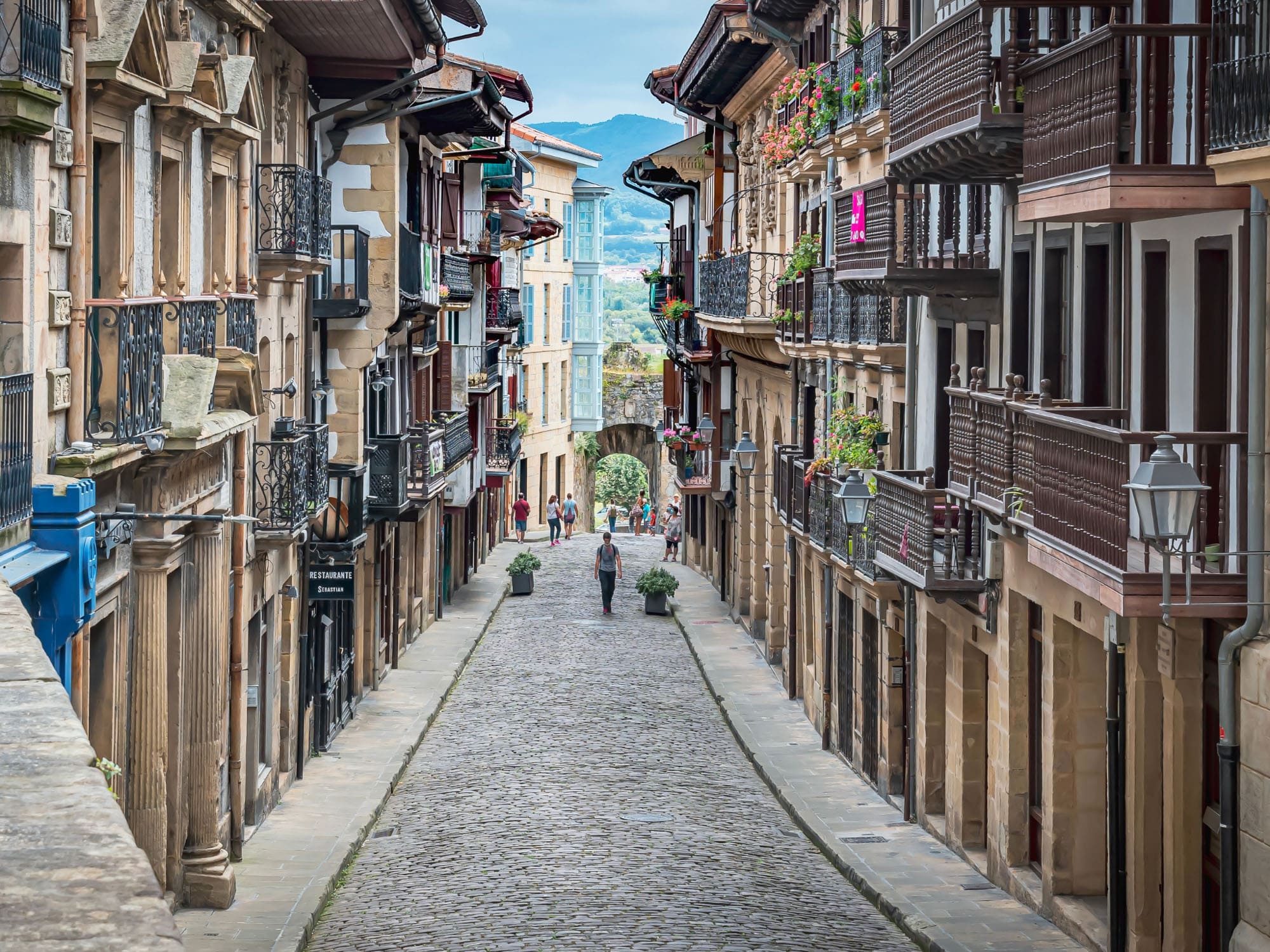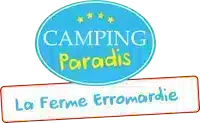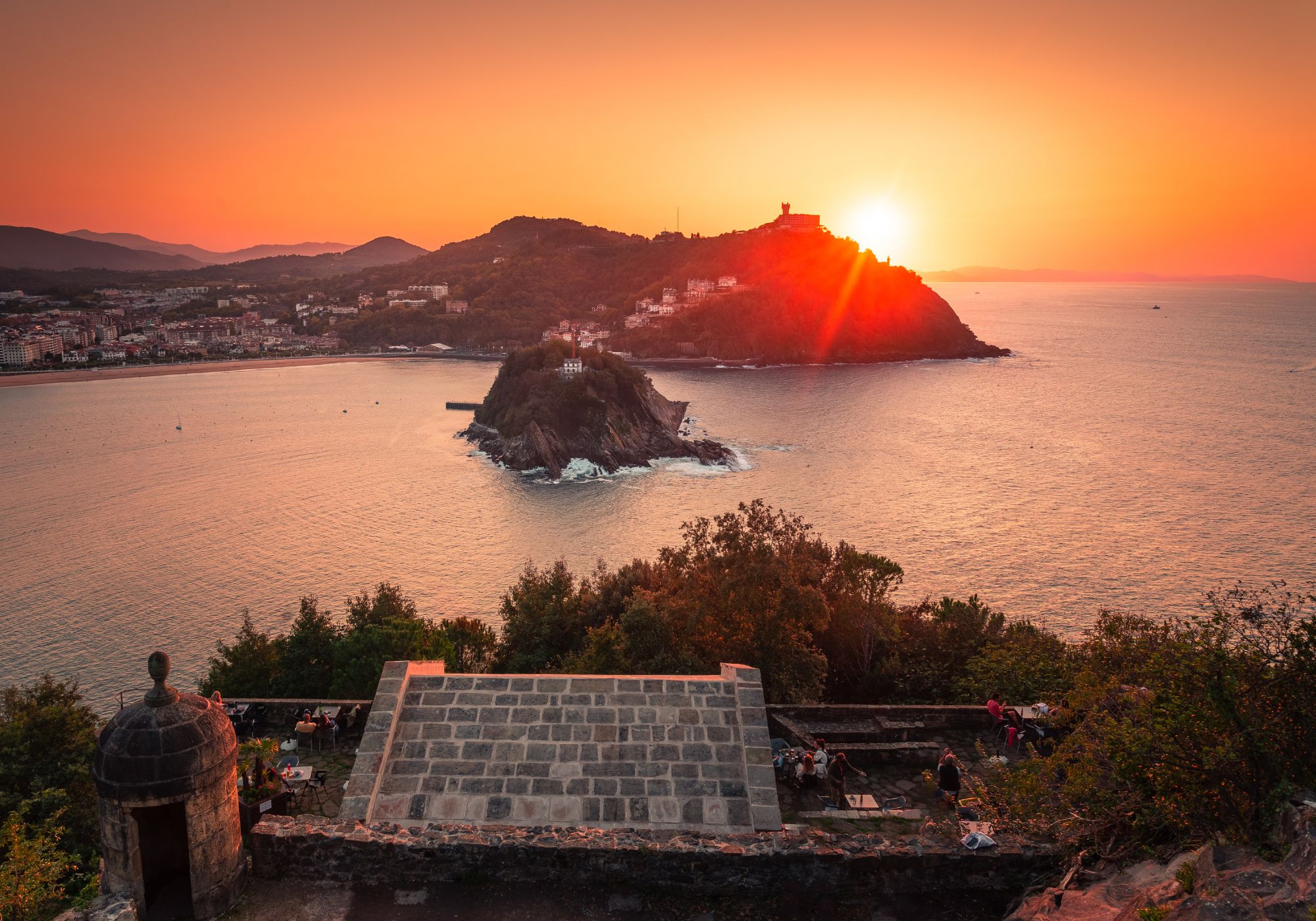5 must-see places in the Spanish Basque Country
As soon as you cross the border between Spain and France, the atmosphere changes radically: you’re still in the Basque Country, but on Spanish time, where partying is a religion. Even the coastline is different, with coves nestling in high, sheer cliffs, but inland you’ll find the same green, undulating landscape. For you, we’ve selected 5 must-see towns in the 4 Basque-Spanish provinces during your stay at camping Pays Basque La Ferme d’Erromardie.

San Sebastián: beaches and gastronomy
Nestled in the soft emerald-green mountains, San Sebastián Bay offers visitors an exceptional panorama: its two crescent-moon-shaped golden sand beaches, La Concha and Ondarreta beach, bordered by the blue of the ocean. Take the funicular up to the summit of Mount Igueldo at the western tip of the bay, for breathtaking views. But the city hides many other treasures: this gastronomic capital of the world is packed with restaurants specializing in pintxos, renowned gastronomic miniatures. Plunge straight into the historic center to feel the city vibrate, as the narrow streets teem with bars, restaurants and dapper boutiques. Don’t miss the remarkable historic buildings such as the Baroque Basilica of Santa Maria, the Gothic Church of San Vicente, or the astonishing Plaza de la Constitución, each window of which bears a number in memory of its arena past. Unforgettable during your camping holiday in the Spanish Basque Country!
Bilbao: culture and heritage
To visit Bilbao is to walk a fine line between past and future. You’ll no doubt be planning to visit the Guggenheim Museum, the jewel in the crown of contemporary art, a fantastic diamond sparkling on the banks of the Ria de Bilbao, which runs through the city. World-renowned for its innovative, futuristic architecture by Frank Gehry and the quality and diversity of the works on display, the museum has single-handedly boosted Bilbao’s tourism potential. However, it would be a shame not to take the time to visit the city’s rich architectural heritage. Don’t miss the estuary and its bridges, especially the Vizcaya Bridge, the old Portugalete district and the Basilica of Santa Maria, the sumptuous Arriaga Theatre, the impressive Plaza Nueva and its 3,400 m², the many churches in Baroque, Gothic or Basque Gothic style, and the Siete Calles district, which is bubbling with culture and life.
Fontarrabie: charm and art of living
Often overshadowed by the fame of San Sebastián, the town of Fontarrabie is nevertheless a small paradise sheltered from mass tourism. A charming walled town with typical Basque charm, it’s a delight to wander through the maze of winding streets in the historic center, where several remarkable monuments have been erected, including the castle of Emperor Charles V. Nearby is the Marina district, with its terraces, colorful fishermen’s houses, the fishing port and the wide, pleasant Hondarribia beach. The town also boasts an impressive concentration of gourmet restaurants specializing in Spanish Basque cuisine, as well as pintxo bars and clubs, making it a festive seaside resort.
Guernica: memory and rebirth
Guernica, made famous by Pablo Picasso’s work bearing the town’s name, was almost entirely razed to the ground by German and Italian forces during the Spanish Civil War. Guernica has no historic center, but the town is home to numerous memorial sites paying tribute to the past of this bastion of Republican resistance and Mecca of Basque culture. Discover the Casa de Juntas (House of the Assemblies of Bizkaia) and the Guernica Tree, the Peace Museum and the Park of the Peoples of Europe. To recover from your emotions, don’t miss Guernica’s Monday market, a veritable institution in the Basque Country, a place for sharing and meeting where you’ll find all the products for which the region’s gastronomy is famous.
Pamplona: festivals and traditions
Ernest Hemingway, the city’s adopted son, celebrated the festivities in one of his works, “The Sun Also Rises”, and they also make Pamplona world-famous with the “Encierro”, a famous race in which 6 bulls chase the participants 800 m to the plaza de toros. Every year, from July 6 to 14, no fewer than 3 million people take to the streets of the city, all dressed in white and red, to take part in the festivities and spectacle. But it’s also a pleasure to wander through the city, empty of these crowds, and discover a delightful medieval historic center, with its cobbled streets, fortified walls and numerous squares lined with 18th-century turreted houses. And of course, as a Basque and Spanish city, it offers a strong festive and gastronomic tour.







